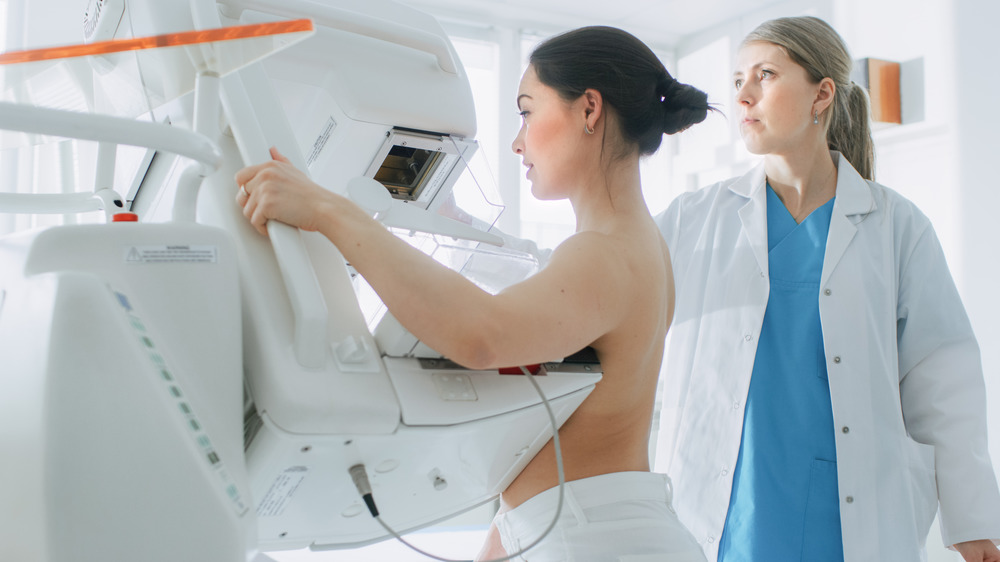Lung Cancer Is No Longer The Most Common Form Of The Disease
For the past 20 years, lung cancer has held the titles of not only the leading cause of cancer deaths, but also the most common form of cancer globally (via Reuters). However, earlier this week in a briefing to the U.N., oncologist and member of the World Health Organization (WHO) Dr. Andre Ilbawi stated, "For the first time, breast cancer now constitutes the most commonly occurring cancer globally."
While breast cancer has been the most common form of breast cancer diagnosed in women for some time, lung cancer has traditionally been the overall most common form in both sexes globally. These findings are not only observed globally, but also here at home in the U.S.
New data and trends from the American Cancer Society suggest that in 2021, more Americans will now be diagnosed with breast cancer than lung cancer. It is estimated that in 2021, there will be 284,200 new cases of breast cancer diagnosed in both sexes, with 2,650 being in men and the remaining 281,550 found in women. While overtaking lung cancer as the most common form, breast cancer is not expected to overtake lung cancer as the leading cause of cancer deaths. The ACS predicts roughly 131,880 lung cancer deaths this year compared to 44,130 deaths due to breast cancer.
Risk factors, symptoms, and screening for breast cancer
While there are different forms of breast cancer, all forms are caused by malignant cells which grow uncontrollably (via Centers for Disease Control and Prevention). Some risk factors for developing breast cancer include: being a female aged 50 or older, genetic factors (you've probably heard of the BRCA1 and BRCA 2 genes), physical inactivity and obesity, dense breast tissue, a familial history of breast or ovarian cancers.
Symptoms of breast cancer include: breast pain, a new palpable lump within the breast tissue or underarm, dimpling or redness of the skin of the breast, or abnormal nipple discharge, amongst others. Self breast exams, which can be done routinely in the comfort of your own home, are a good way to become familiar with your breast tissue. When familiarity has been established, you are more likely to notice any new developments or lumps which should then be discussed with your medical provider.
The keys to decreasing mortality due to cancer have always been through prevention and proper screenings. Currently the United States Preventative Task Services Task Force recommends mammography screening every other year in women 50 to 74 with an average risk for breast cancer. Women 40 to 49 are advised to speak with their healthcare providers about their risk and appropriate time and frequency of mammography screening.


